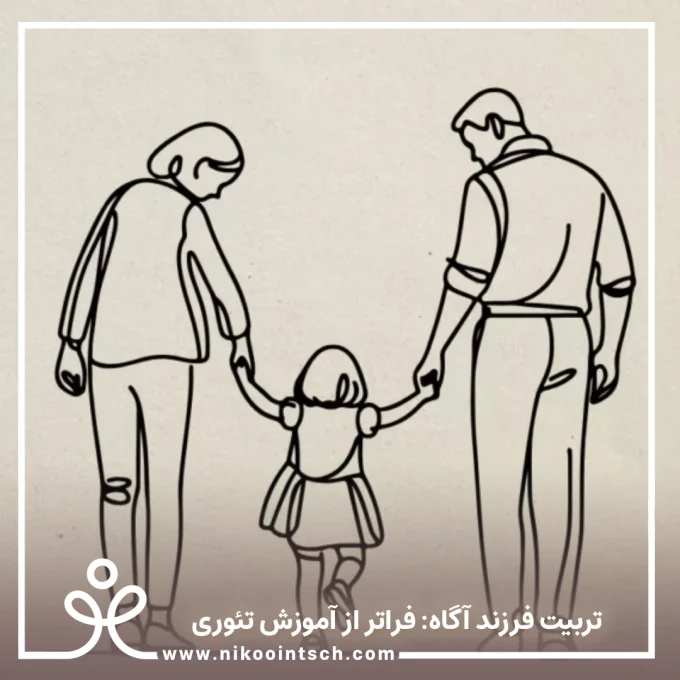Have you ever seen your child do something just to avoid upsetting a friend, even though they didn’t really want to?
Or perhaps you yourself experienced similar situations as a child?
The truth is, saying “no” is one of the hardest communication skills to master — a skill that, if not learned, can lead to dependency, anxiety, and even irreversible emotional, social, or financial consequences in adulthood.
But the good news is that “saying no” is a teachable skill, just like reading and writing.
Why Teaching the Skill of Saying No Matters
A child or teenager who cannot say “no” lacks assertiveness — the ability to express one’s feelings and desires without fear, yet with respect for others.
The more diverse students’ behaviors are, and the larger their peer group becomes, the greater their exposure to different behaviors and opportunities to choose friends.
Relationship regulation is one of the foundational skills in social interaction, especially during the elementary years.
Among the key skills for effective interaction and friendship building is the ability to recognize and express emotions in a safe and fair environment.
In educational and social settings, students are constantly exposed to peer pressure — from engaging in risky behaviors to imitating negative role models.
In such situations, the ability to say “no” politely yet firmly can protect them from poor decisions.
Assertiveness is neither aggression nor passivity. It’s the balanced path where a student learns to be respectful without letting others cross personal boundaries.
How to Teach the Skill of Saying No
۱. Self-awareness
۲. Exposure to Different Peers in a Safe and Healthy Environment
۳. Modeling Through Stories and Classroom Activities
Children imitate what they see, not what they are told.
When parents or teachers say “no” respectfully but firmly — for example, when faced with an unreasonable request — children learn that polite refusal is not rudeness but awareness and self-control.
۴. Indirect Training for Parents and Educators
۵. Provide Alternative Phrases
Many children simply don’t know how to say “no.” Teaching them short, natural sentences can help, such as:
“No, I can’t right now, maybe later.”
“Thanks for asking, but I’m not interested.”
“I’d rather not do that.”
These linguistic exercises empower students to express refusal respectfully.
۶. Role Play Practice
At school or home, you can create situations where children decide how to respond.
For instance: “Your friend asks you to share answers during a test. What do you say?”
This way, they learn to stay honest while maintaining personal boundaries.
۷. Building Self-Esteem
A student who values themselves doesn’t need constant approval from others.
When a child feels respected, they stop fearing judgment.
Before teaching “no,” we must nurture self-worth through sincere praise, active listening, and accepting mistakes without humiliation.
۸. Teaching the Difference Between Respect and Obedience
In many cultures, respecting elders is valued — but children must also learn that blind obedience differs from thoughtful respect.
Saying “no” to an inappropriate request, even from an adult, when done respectfully, is a sign of maturity, not defiance.
۹. Encouraging Open Dialogue
Students should feel free to talk about their emotions.
When teachers and parents are good listeners, children learn to express their opinions honestly instead of hiding their true selves just to please others.
Common Mistakes Parents Make When Teaching Kids to Say No
One of the biggest parenting challenges is teaching children the art of saying no.
Sometimes, parents unintentionally prevent this learning process through well-meaning but counterproductive behaviors.
Below are common mistakes that can hinder a child’s development of assertiveness.
۱. Confusing Respect with Obedience
Respect for elders is valuable, but it often gets mistaken for total obedience.
When a child learns they must always say yes to be polite, they also learn that disagreement equals disrespect.
This can strip them of the ability to protect themselves in unsafe or unfair situations.
Instead of demanding blind obedience, parents should teach that respect means expressing opinions politely, not accepting everything unquestioningly.
۲. Criticizing Children for Disagreeing
When parents respond to differing opinions with “Don’t argue,” “You talk too much,” or “You’re too young to understand,” children learn that disagreement is dangerous.
The goal should be to nurture open, logical dialogue where the child can safely practice assertiveness.
۳. Deciding Everything for the Child
Parents who make every decision — from clothing to hobbies — send the message, “You’re not capable of deciding.”
Without chances to choose or fail, children grow fearful of independence.
Allowing them to make small choices builds decision-making confidence and resistance to peer pressure.
۴. Ignoring the Child’s Feelings
When parents focus solely on behavior and dismiss the emotion behind it, they miss opportunities to teach empathy.
For example, if a child says, “I don’t want to play with that friend,” instead of labeling it as rude, parents can ask, “Would you like to tell me why?”
This teaches that emotions are valid and that saying “no” is sometimes necessary for self-protection.
۵. Using Fear or Threats to Control Behavior
Statements like “If you don’t do this, I won’t love you” or “You’ll be punished if you don’t listen” replace reasoning with fear.
This destroys assertiveness and creates unhealthy dependency.
Instead, explain natural consequences: “If you don’t tidy your toys, they might get lost.”
Such conversations foster understanding and responsibility.
۶. Failing to Encourage Independent Thinking
Some parents only praise children when they conform.
This teaches them to live for approval.
Praise should be based on honesty, effort, and independent decisions — not just results.
Recognizing a child’s courage to disagree or resist peer pressure strengthens their ability to say no.
۷. Lack of Two-Way Communication at Home
A home without dialogue cannot nurture assertiveness.
When a child knows they can speak without fear of ridicule or punishment, they gradually learn to say “no” politely and express opinions confidently.
The Role of Schools in Teaching Assertiveness
Schools can create safe environments for practicing this skill through life-skills workshops, interactive theater, and group discussions.
Here, students learn that expressing disagreement is a form of self-respect, not rebellion.
The ability to say “no” forms a cornerstone of personal and social development.
A child who learns today to say “no” politely but firmly will grow into an adult who can resist peer pressure and make healthier choices.
Assertiveness builds a boundary between respect and passivity — a boundary that, with education and practice, becomes a shield for wise decision-making.












